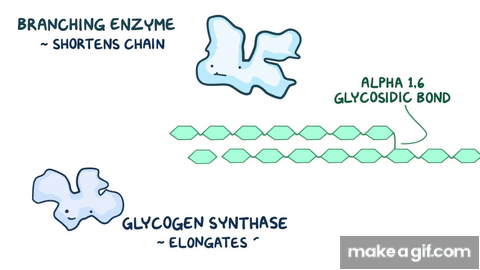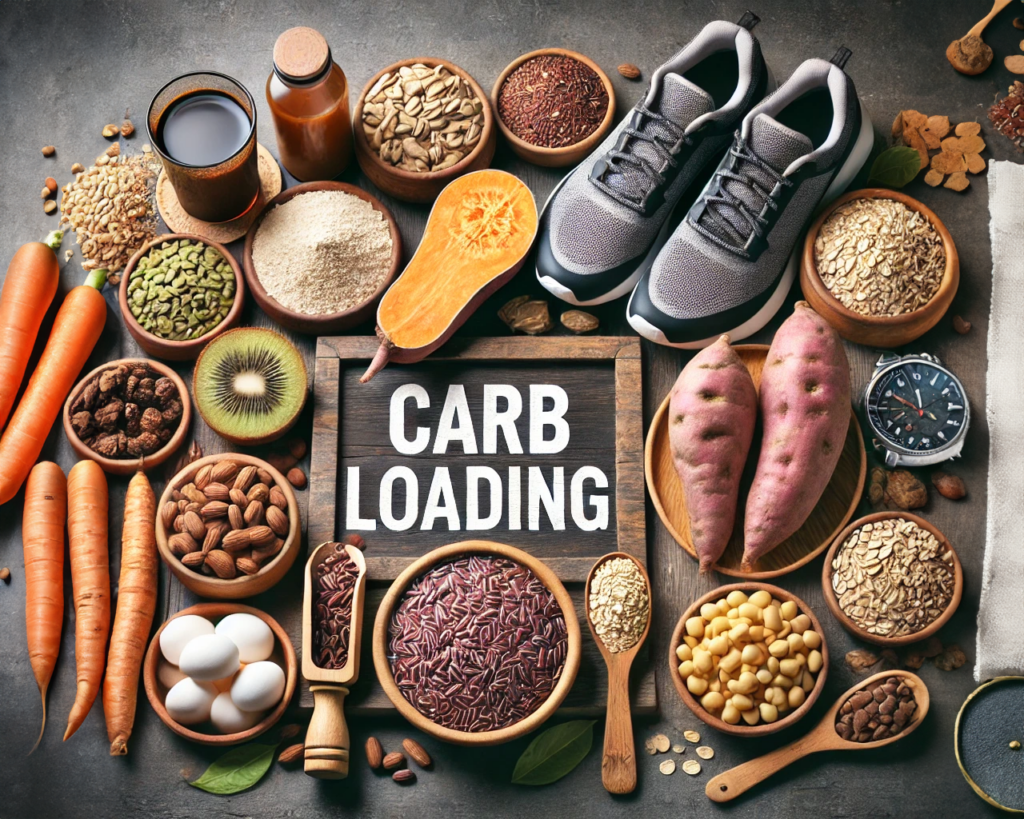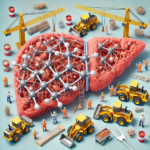💊 What is Glycogenesis?
Glycogenesis (AKA Carb-loading), is the biochemical process our bodies use to store excess energy from glucose in the form of glycogen, mostly in the liver and muscles.

Once glucose enters the bloodstream, for example after a large meal rich in carbohydrates, and high glucose levels are detected, glycogenesis begins. The process is mainly controlled by insulin. Once glucose enters the liver and muscle cells, it begins chemical modifications in 4 main steps:
- First its changed from glucose into glucose-6-phosphate by the enzyme hexokinase (or glucokinase in the liver).
- Glucose-6-phosphate is then converted to glucose-1-phosphate
- Glucose-1-phosphate is activated by uridine diphosphate (UDP) to form UDP-glucose.
- The enzyme glycogen synthase then connects these glucose units into branches of glycogen for storage and later use:

Glycogenesis Vs. Lipogenesis
Don’t confuse storing extra energy in glycogen with storing extra energy in fat. Here is the difference: When glycogen stores are full, the body switches to a back up pathway called lipogenesis. In lipogenesis, excess glucose is turned into fatty acids and stored as triglycerides in fat tissue, creating a long-term energy reserve.
The main difference between glycogenesis and lipogenesis is the type of energy storage: glycogenesis stores glucose as glycogen, which is easier to access, while lipogenesis stores fat for later use. Glycogen can only be stored in limited amounts in the liver and muscles, but fat storage through lipogenesis can be almost unlimited, the heaviest recorded human in history is Jon Brower Minnoch, an American man who weighed approximately 1,400lbs.
Balancing glycogenesis and lipogenesis is key for metabolic health and performance. When the liver’s glycogen stores are full, the body shifts to lipogenesis to store extra glucose as fat. Glycogenesis helps maintain short-term energy reserves, while lipogenesis ensures that surplus energy is saved for the future. Proper regulation of these processes is important to avoid excessive fat buildup and to manage conditions like insulin resistance.
Glycogenesis Vs. Gluconeogenesis
Don’t mix up these two terms either. Gluconeogenesis makes glucose from scratch starting from non-carbohydrate sources during fasting or low-carb states. Glycogenesis works in the opposite way. Whenever there is excess glucose, it is stored in chains of glycogen. In muscles, glycogen provides energy during exercise, while in the liver, it helps keep blood sugar steady between meals.
The balance between glycogenesis and gluconeogenesis is key for maintaining energy. When glycogen stores in the liver are full, extra glucose is converted into fat for long-term storage. This balance shows how important glycogenesis is in managing both short-term and long-term energy needs, which is vital for good metabolic health.
🤔 Why You Need to Know:
Knowing fundamental principles of metabolism will help you understand nutritional and energy management principles. This will help you stay healthy and optimize your performance at the gym. You will get the most out of your workouts, improve recovery, and prevent energy crashes.
Managing glycogen properly also plays a big role in controlling blood sugar and supporting overall metabolic health. Whether you’re an athlete, working on weight management, or just trying to boost your fitness, understanding glycogenesis can help you reach your goals more effectively.
📝 Action Items to Optimize Glycogenesis:
- Refuel Post-Exercise: To optimize glycogen replenishment, consume carbohydrates within 30 minutes to 2 hours after your workout. Focus on complex carbs like fruits or starchy vegetables for sustained energy.
- Balance Carbohydrate Intake: Ensure that your diet includes enough carbohydrates to support glycogen storage, especially if you’re engaging in high-intensity or endurance-based workouts. Aim for 3-7 grams of carbohydrates per kilogram of body weight, depending on your activity level.
- Avoid Overeating Carbs: Once glycogen stores are full, excess carbohydrates are converted into fat. Be mindful of your carb intake to avoid unnecessary fat storage.
- Incorporate Carb Cycling: If you’re an athlete or active individual, consider cycling your carbohydrate intake to align with training demands, increasing carbs on heavy training days and decreasing them on rest days to efficiently manage glycogen levels.
- Monitor Your Energy Levels: If you frequently feel fatigued during workouts, you might need to adjust your glycogen replenishment strategy. Track your carbohydrate intake and adjust based on performance.
🤯 Trivia:
Did you know that the human body can store around 100 grams of glycogen in the liver and up to 400 grams in muscle tissue? That means your body can store approximately 2,000 calories worth of glycogen, enough to fuel you for moderate activity over several hours. Once these stores are depleted, your body shifts to other energy sources like fat through processes such as lipolysis.



